When towing becomes necessary, we recommend that you have your vehicle towed by a professional-either through your Toyota dealer or a certified commercial towing service-using a wheel-lift or flatbed truck. Always utilize a safety chain system during towing and strictly follow all applicable state, provincial, and local towing regulations.
Situations When Towing with Another Vehicle is Not Feasible
In some cases, it is not advisable to tow your vehicle with cables or chains. For instance, if the front wheels are locked because of an engaged parking lock, towing in this manner becomes impractical. Under these circumstances, contact your Toyota dealer or a professional towing service immediately.
Situations When It Is Necessary to Contact a Dealer Before Towing
Certain issues may indicate a serious problem with your vehicle’s transmission or other crucial systems. If:
In these cases, you should contact your Toyota dealer or a qualified commercial towing service before proceeding with any towing to ensure proper handling.
Proper towing procedures are essential to safeguard your vehicle and prevent further damage. For owners of the Toyota bZ4X, using professional towing services when needed not only helps protect advanced vehicle systems such as the EV and smart key controls but also preserves the overall integrity of your investment. Adhering to these guidelines and consulting your owner's manual can make all the difference in maintaining a safe and reliable towing process.
Towing with a wheel-lift type truck
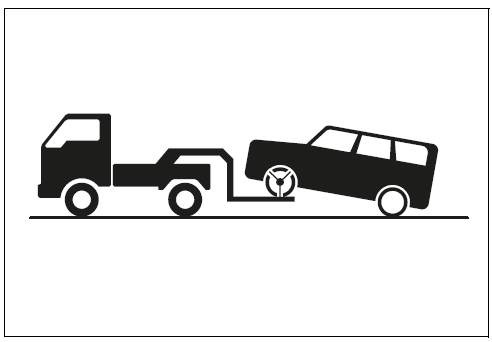
Release the parking brake.
Turn automatic mode off.
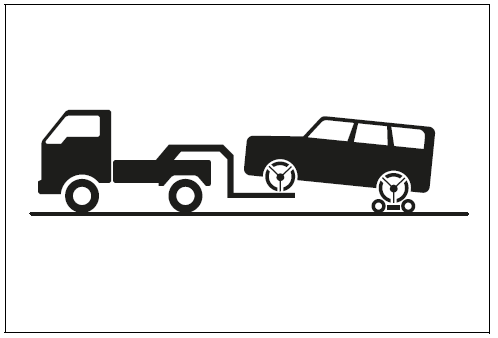
Use a towing dolly under the rear wheels.
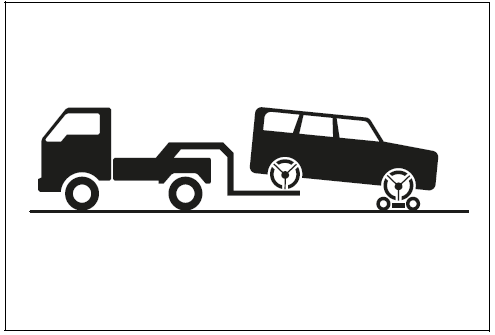
Use a towing dolly under the front wheels.
WARNING
Observe the following precautions.
Failure to do so may result in death or serious injury.
When towing the vehicle
Be sure to transport the vehicle with the front wheels raised or with all four wheels raised off the ground. If the vehicle is towed with the front wheels contacting the ground, the drivetrain and related parts may be damaged or electricity generated by the operation of the motor may cause a fire to occur depending on the nature of the damage or malfunction.
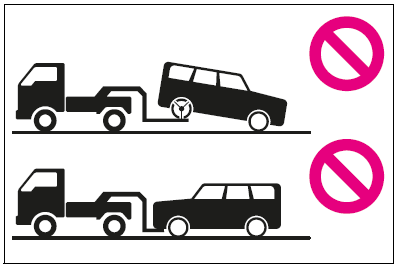
WARNING
Be sure to transport the vehicle with all four wheels raised off the ground. If the vehicle is towed with the tires contacting the ground, the drivetrain or related parts may be damaged, the vehicle may fly off the truck, or electricity generated by the operation of the motor may cause a fire to occur depending on the nature of the damage or malfunction.

NOTICE
To prevent damage to the vehicle when towing using a wheel-lift type truck
When raising the vehicle, ensure adequate ground clearance for towing at the opposite end of the raised vehicle. Without adequate clearance, the vehicle could be damaged while being towed.
Towing with a sling-type truck
Do not tow with a sling-type truck to prevent body damage.
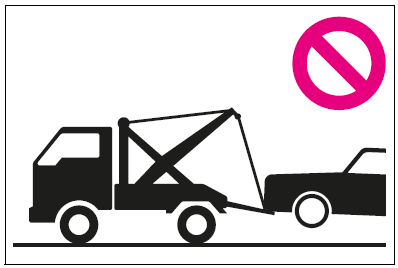
Using a Flatbed Truck
When transporting your vehicle on a flatbed truck, always secure it with tire strapping belts. For proper application, consult the flatbed truck’s owner's manual for the recommended tire strapping method.
To minimize movement during transit, be sure to engage the parking brake and turn off the power switch before the vehicle is loaded.
Emergency Towing
In an emergency where a tow truck is unavailable, your vehicle may be temporarily towed using cables or chains attached to the designated emergency towing eyelets. This method should only be attempted on hard, level road surfaces, for short distances, and at speeds no greater than 18 mph (30 km/h).
A driver must remain in the vehicle to steer and operate the brakes during the tow. Additionally, ensure that the vehicle’s wheels, drivetrain, axles, steering, and brakes are all in good condition before proceeding.
Emergency towing procedure
To have your vehicle towed by another vehicle, the towing eyelet must be installed to your vehicle. Install the towing eyelet using the following procedure.
*: Wheel bolt wrench can be purchased at your Toyota dealer.
To protect the bodywork, place a rag between the screwdriver and the vehicle body as shown in the illustration.
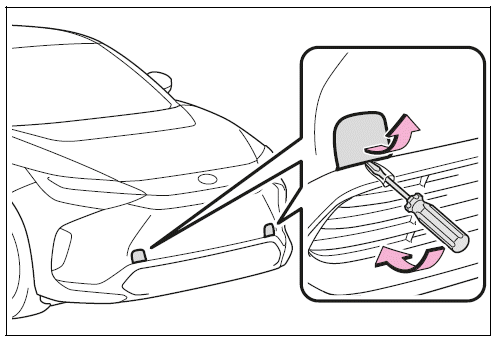
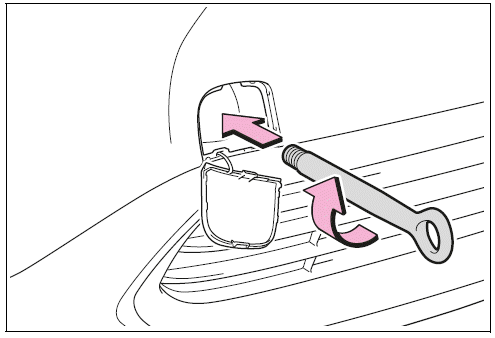
*: Wheel bolt wrench can be purchased at your Toyota dealer.
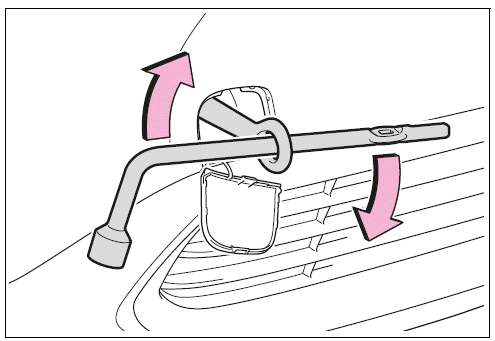
Take care not to damage the vehicle body.
If the EV system does not start, turn the power switch to ON.
Turn automatic mode off.
While Towing
If the EV system is turned off while towing, the power assist for both the brakes and steering will be unavailable, which makes steering and braking considerably more challenging.
Wheel Bolt Wrench
A wheel bolt wrench required for proper maintenance and tire replacement can be purchased at your Toyota dealer.
WARNING
Battery Precautions
Please observe the following towing precautions: Failure to adhere to these may result in severe injury or even death.
Installing Towing Eyelets
Ensure that the towing eyelets are firmly and securely installed. Loose eyelets may come undone during towing, posing a safety risk.
NOTICE
To Prevent Damage During Emergency Towing
Do not attach cables or chains to the suspension components, as this can result in costly damage to the vehicle.
If a Warning Light Turns On or a Warning Buzzer Sounds
If you experience any of the following symptoms, your vehicle likely needs adjustment or repair. In such cases, contact your Toyota dealer as soon as possible.
Visible Symptoms
Audible Symptoms
Operational Symptoms
Ensuring proper towing procedures and addressing any warning signals immediately is crucial for vehicle safety and performance. For owners of the Toyota bZ4X, promptly resolving any abnormal visible, audible, or operational symptoms not only preserves the vehicle’s advanced systems but also prevents costly repairs and potential hazards. Regular maintenance and adherence to these towing precautions will help keep your vehicle operating reliably and safely.
 When trouble arises
When trouble arises If a Warning Light Turns On or a Warning Buzzer Sounds
If a Warning Light Turns On or a Warning Buzzer SoundsSafe Exit Assist – Comprehensive Alert and Customization Features
Outside rear view mirror indicator visibility
In harsh, bright sunlight conditions, the indicators on the outside rearview mirrors may become difficult to see. This reduced visibility can delay your recognition of key alerts, so extra caution is advised on very sunny days.
Buzzer
If t ...
Armrest
Fold down the armrest for use.
NOTICE
To prevent damage to the
armrest
Do not apply too much load on the
armrest.
Coat hooks
The coat hooks are provided
with the rear assist grips.
WARNING
Items that must not be
hanged on the hook
Do not hang coat hangers or
other hard ...